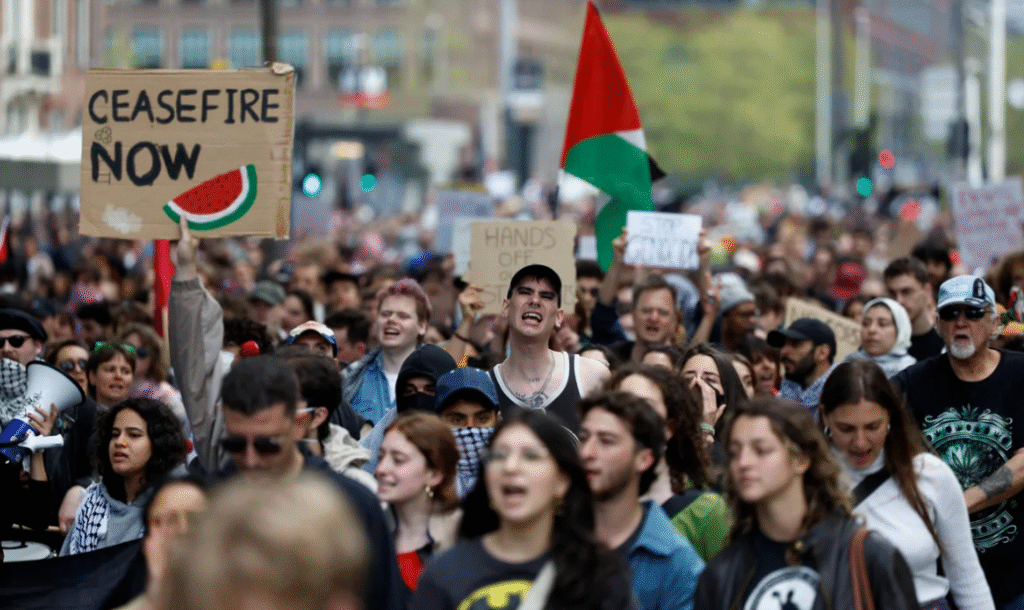Tensions in Israel continue to escalate as large groups of protesters have taken to the streets, demanding an immediate ceasefire in Gaza. The demonstrations, which have spread to key public areas including rail tracks, reflect mounting frustration among citizens over the government’s handling of the ongoing conflict. Police forces responded by forcibly removing demonstrators, leading to chaotic scenes that underline the growing rift between state authorities and segments of the Israeli public.
Protests erupt across major cities
The protests began as organized gatherings but quickly grew into widespread rallies across several cities. Activists blocked rail lines, chanting for an end to the military operations in Gaza and urging political leaders to shift toward diplomacy.
Demonstrators held banners, waved flags, and called for a solution that prioritizes humanitarian aid for civilians caught in the crossfire. The actions disrupted public transport, sparking a tense standoff with security forces.

Law enforcement authorities swiftly intervened, dragging protesters from rail tracks and detaining several participants. Videos shared by local media showed officers pulling individuals from sit-ins as commuters looked on.
In response to public criticism, police defended their actions by claiming that the blockade of transport routes posed a serious threat to public safety. Moreover, they argued that it disrupted essential services, thereby justifying their intervention. However, activists countered that civil disobedience was necessary to draw attention to the humanitarian toll of the Gaza conflict.
Calls for a Gaza ceasefire grow louder
The central demand of the protesters is a ceasefire in Gaza, where ongoing military operations have led to significant civilian casualties and widespread destruction. Families of hostages, human rights activists, and community leaders have joined the rallies, pressing the government to adopt a different approach.

They argue that prolonged military campaigns only deepen suffering without offering lasting security. The demonstrations highlight the divide within Israeli society, as some groups call for tougher military measures while others stress diplomacy and humanitarian relief.
International pressure adds to domestic unrest
The protests in Israel mirror growing international calls for a ceasefire. Several global leaders, humanitarian agencies, and civil society groups have urged both Israel and Hamas to end hostilities and allow the flow of aid into Gaza.
Images of destruction and suffering have sparked outrage worldwide, with increasing pressure on Israel to balance security concerns with humanitarian responsibilities. The domestic demonstrations amplify this message, showing that dissent is not limited to foreign critics but also comes from within Israeli society.
The protests calling for a Gaza ceasefire mark an important moment in Israel’s domestic politics. The images of police dragging protesters from rail lines reveal not only the intensity of public dissent but also the government’s determination to maintain control. . The coming weeks will show whether public pressure can influence policy or whether the standoff between citizens and state will continue to escalate.


 US vetoes UN Security Council resolution on Gaza ceasefire
US vetoes UN Security Council resolution on Gaza ceasefire